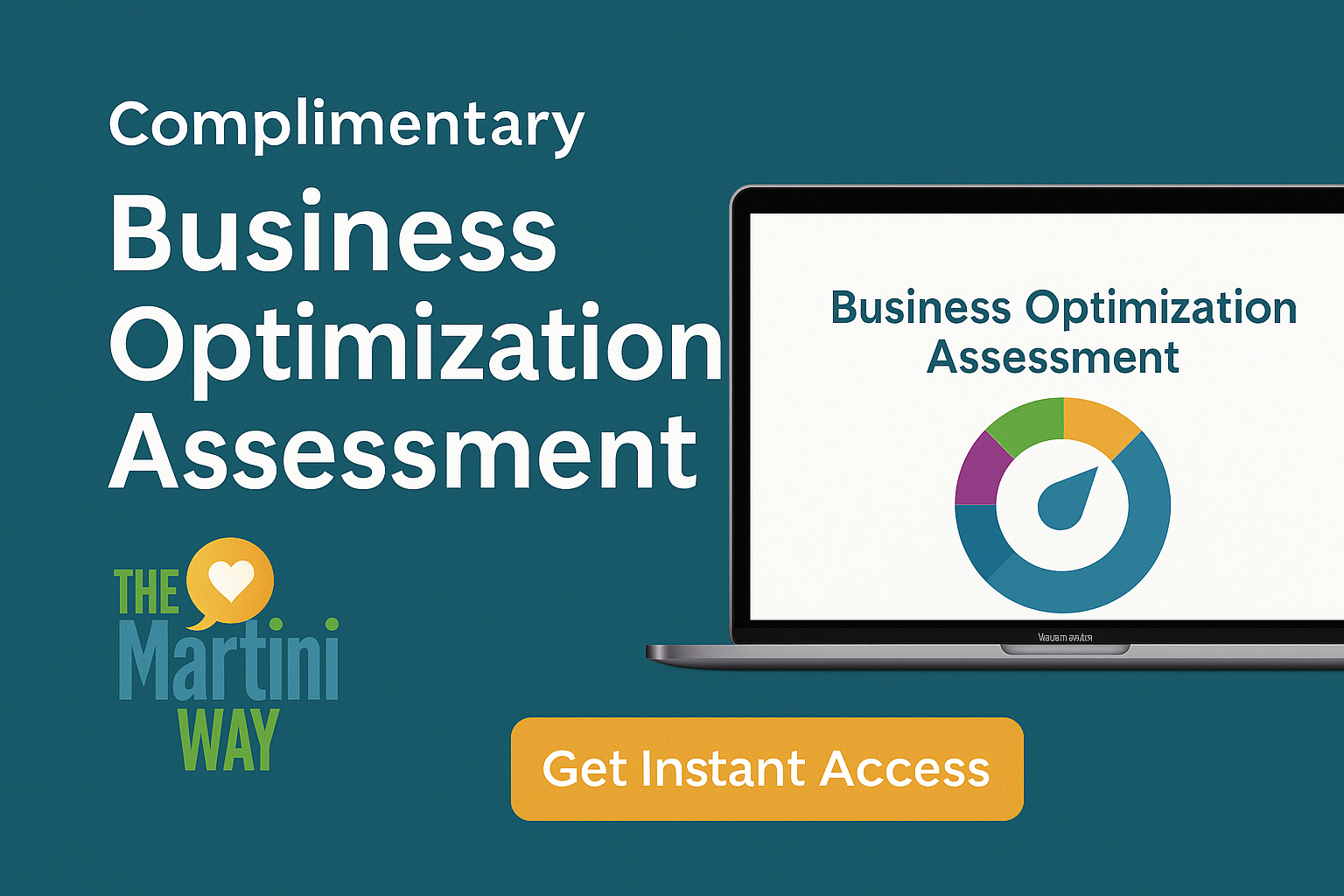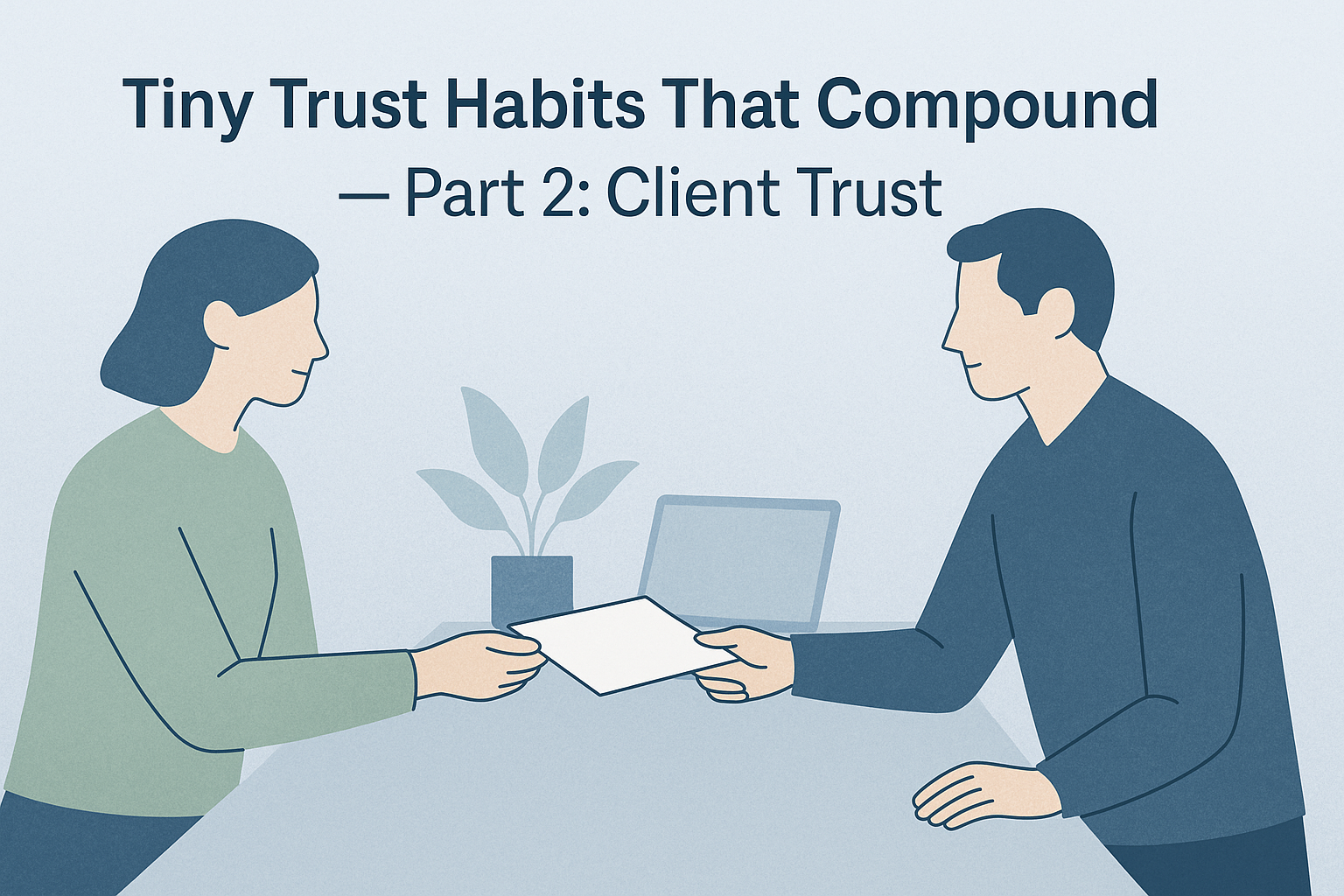We’re living through a trust recession. Attention is fragmented, inboxes are crowded, and even sincere professionals are stretched thin. In that environment, credibility is not a campaign — it’s the outcome of hundreds of quiet choices. Last week we focused on self-trust. This week we turn outward: how tiny habits rebuild client trust without adding hours to your workload.
Client trust rarely shatters in one dramatic moment. It erodes through near-invisible frictions: the “I’ll circle back” that slips your mind, an acknowledgment you meant to send but didn’t, a deliverable that meets the scope but arrives with no context. None of these are character flaws. They are the predictable by-products of running a modern business in constant noise.

The path back is not grand gestures. It is micro-consistency that clients can feel.
1. Close the loop.
When something arrives — an email, asset, or decision — confirm receipt and state the next step. “Got it. I’ll review by Thursday and send recommendations.” When you finish a task, mark it done and say what’s next. This reduces uncertainty and cuts the mental load clients carry between updates. Team and clients will often hear me say… “Closing the loop…” and then whatever it is. Either sending or receiving that is like a happy checkmark in my brain. 🙂
2. Protect boundaries transparently.
Boundaries are not barriers; they are agreements. Share your rhythms up front: response times, meeting windows, and how emergencies are handled. “I reply within one business day; urgent items go in the subject line.” Clarity creates safety and prevents resentment for both sides.
3. Deliver early when possible.
You don’t need to beat every deadline. Choose one step in the process to complete ahead of schedule — a first draft, a status note, or the kickoff agenda. Early delivery creates a small but memorable gap between expectation and experience. That gap is where loyalty grows.
4. Calibrate tone for warmth and clarity.
Many trust leaks are tonal, not technical. Replace rushed, dense paragraphs with short, human sentences and a skimmable structure. Lead with the headline, then the detail.
When in doubt, read the message out loud. If it sounds clipped, add a line of context or care.
This is one I have to pay attention to… sometimes I want to get a response out quickly and “just type” so go back and read it out loud to ensure my response doesn’t feel too “crisp” or “short” as it’s not meant to be.
5. Make the invisible, visible.
Clients can’t value what they never see. Surface your thinking with light narration: “Here’s why I chose this direction,” or “Two risks I’m watching.” You are not adding fluff; you are revealing expertise. Transparency converts uncertainty into confidence.
These habits compound because they send the same signal in different ways: you are safe to trust. Over time, that signal becomes your brand. It is the reason clients relax on calls, say yes to renewals, and refer you when they are asked, “Who really shows up?”
Measure it with two simple signals: fewer “just checking in” emails from clients and faster approvals when it’s time for a renewal or additional projects. Over a quarter, you’ll also see steadier renewals and warmer referrals, because certainty is contagious.
You cannot out-shout the current noise, and you don’t need to. Quiet, reliable follow-through is more persuasive than aggressive promotion. Choose one habit from this list and practice it for two weeks. Watch how quickly the temperature of your client relationships changes.
In a trust recession, consistency is currency. Spend it daily, in small amounts, and let the compounding do the rest.
